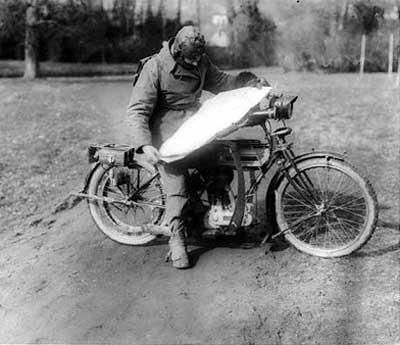Whether you're a "windshield tourist" who rarely leaves the pavement or a serious backcountry hiker, you'll find plenty of high-tech aids to navigation. GPS units, apps for smart phones and other electronic devices offer a growing number of alternatives to traditional paper maps.
Both approaches clearly have their pros and cons—and their fans. It's hard to beat a traditional paper map when you want to get the big picture of an area or your route, and for backcountry users, the venerable topographic map offers details that can be critical to survival. Although figuring out how to refold that old-school map can sometimes be a pain, there's no denying their major advantages: they'll work anywhere, and the battery never dies.
A GPS and other electronic travel aids, on the other hand, might offer more current information than a paper map, can search out local services such as restaurants and gas stations, and can be read in the dark without a flashlight. Some devices, such as electronic versions of topographic maps, try to combine the best of both worlds.
Cautious travelers realize that directions from a GPS can sometimes lead the unwary into difficult or even dangerous situations. In some cases, route information is wildly inaccurate, and park visitors have died after following faulty directions and becoming stranded in remote locations.
So...what's your preference for navigating to—and through—a park? Do you still unfold a trusty paper map, rely on a high-tech device, or use a combination of the two?
Have you had any personal adventures—or misadventures—as a result of using either an old- style map or an electronic version?


 Support Essential Coverage of Essential Places
Support Essential Coverage of Essential Places







Comments
Depending on the trip I use pretty much everything available for the planing. Increasingly I like Google Earth and fly over my territory to see the landscape in 3D. But in the field I still rely on a paper topo map. This might change in the future, but not this season and probably not next.
My wife and I typically use both. She likes the turn by turn directions and I prefer a map as I like to see the whole picture. The gps has, on numerous times, led us astray. Fortunately we discovered the error early on and suffered only on minor irratation. In the backcountry I would never depend solely on the gps. Battery death, loss of signal leave too much room for error and subsequent disaster.
Both. I love playing with the latest and greatest technology, but once I leave the pavement, there's a paper map and compass on me. As MRC said, I think some electronic media are amazing for planning purposes. I will just never rely solely on something electronic when I'm far from help.
Until wifi is available everywhere I don't think we have a choice bu to use paper at least when we are on the road.
I don't think there are many tech savvy people these days who don't take advantage of both.
I personally like to use a GPS device, although the maps may be a bit outdated. I've visited locations in new developments that weren't on the map. It can get interesting when it thinks you're in the middle of an undeveloped field.
I generally print out maps ahead of time from electronic services. They're usually updated often. However, when visiting national parks, I like having the park map available. They don't just have roads, but better listings of points of interest. I've noticed that with a lot of electronic mapping services, the maps just show a green area in the middle of public lands. The roads are listed, but not much else.
When on the road I depend more on the GPS than I do with the paper maps. When I'm on the trail I rather use the paper map. The GPS has some nice functions but its accuracy with locations of trails is suspect at time. Case in point, while out on the AT not too long ago, the GPS had me way off the trail. As far as the GPS was concerned, I was walking through the woods.
I'm fine with paper while driving but would use an in-car GPS if I got around to buying one. As it stands, if I'm in doubt where I am, I check my handheld Garmin.
Once on a trail in an unknown area, I find both a topographic map and a GPS essential, along with a personal locator beacon if I'm alone.
I'm with the majority here. Planning our trip of Alaska to Seattle and back later this summer we are sitting down at a table covered with maps, handouts from Provincial visitor centers, two laptops, and lots of advice from more experienced friends. An old briefcase becomes the travelling map case, including a clipboard of our planning notes. Once on the road we'll check for weather and construction updates by laptop at motels, but for the most part we'll be on paper rather than electronic, with continual updates from local queries.
I think it helps that I had significant mapreading and land navigation experience in the military, and am quite comfortable with that mode. Some folks don't have that, and lack that comfort factor.